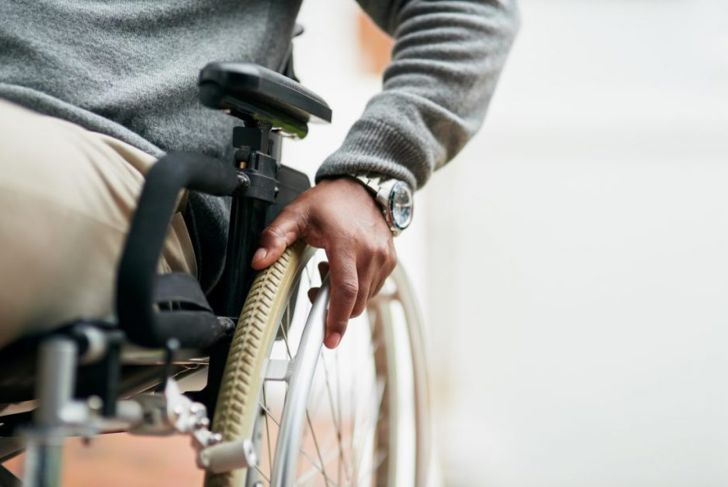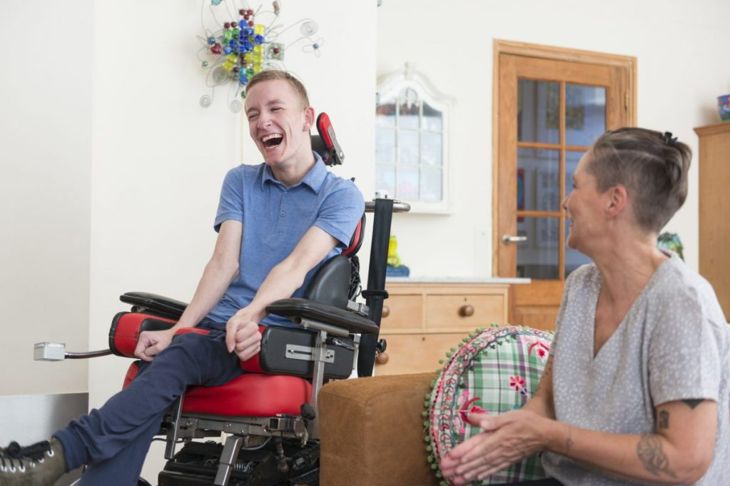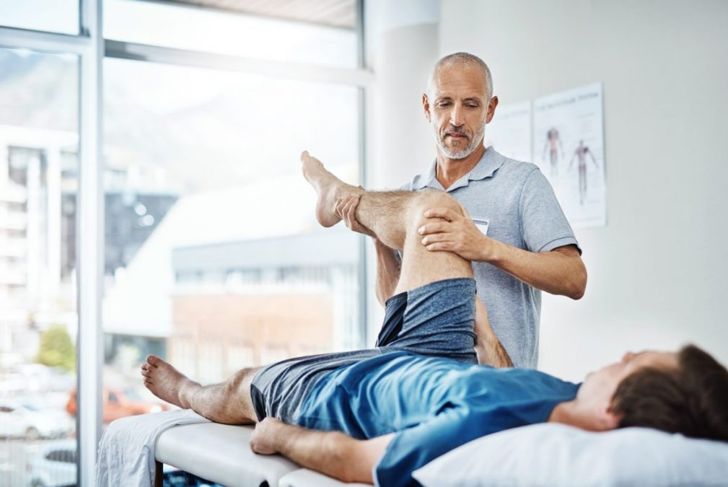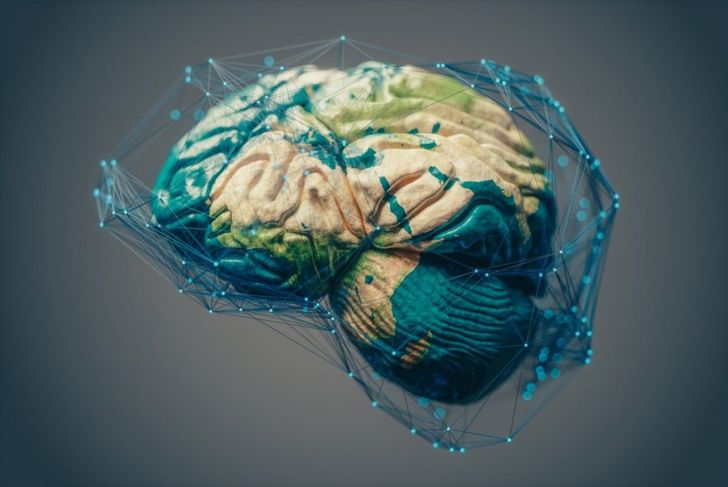Abasia is a broad term that describes the inability to walk, usually due to motor coordination problems. The word ‘abasia’ comes from Greek and means ‘without step.’ People with abasia can have a wide range of disorders that prevent them from walking, including hereditary illness, trauma, and psychological disorders. People with abasia often also have astasis — the inability to stand up unassisted.
Choreic Abasia
Choreic abasia is an inability to walk due to chorea, an involuntary muscle movement disorder that causes quick movements of the body which the person cannot control. If choreic abasia is severe, the legs may thrash about. Treatment for choreic abasia depends on the cause. Although some medications can help control the involuntary muscular movements, there is no cure.
Causes of Choreic Abasia
Huntington’s disease is the most common cause of choreic abasia. The neurodegenerative disease also causes changes in behavior and progressive cognitive impairment. Some other genetic conditions can cause choreic abasia, as well, such as Friedrich’s ataxia and Rett syndrome, although these are very rare. Choreic abasia can also occur as the result of an acquired illness. Cerebrovascular disease, HIV, and rheumatic fever can all lead to chorea in the legs. Occasionally, choreic abasia can develop during pregnancy, which experts classify as chorea gravidarum. The acquired condition sometimes resolves before the baby is born. If not, it usually goes away on its own a few days after delivery.
Paralytic Abasia
Paralytic abasia is the inability to walk because of paralysis. The most common causes of leg paralysis are brain injuries such as a stroke or trauma that damages the spinal cord. Some health conditions can cause paralytic abasia. Brain tumors and hereditary genetic conditions such as Friedrich’s ataxia can cause paralysis of the legs. Some people are born with paralytic abasia as the result of spina bifida or cerebral palsy.
Paralytic Abasia Treatment
There are various treatment options available for people with paralytic abasia. While many of the causes have no cure, it may be possible to improve symptoms. Physical therapy can help people with paralytic abasia maintain as much muscle strength and movement as possible. Occupational therapy can also help people adapt their daily activities to manage the condition. Many people require mobility aids such as wheelchairs or leg braces to get around and maintain independence.
Astasia-abasia
People with astasia-abasia experience severe difficulties with both walking and standing or may be completely unable to perform either despite the person demonstrating voluntary motor control and normal muscle strength in their legs. People with the condition tend to lurch to the side when they attempt to stand or walk. Most cases of astasia-abasia are believed to have a psychogenic cause, meaning emotional stress or a psychological or psychiatric illness leads to the disorder, rather than physical factors.
Abasia and Phobias
In rare cases, a phobia of standing or walking can cause abasia and astasia-abasia. The condition is stasophobia and, depending on the severity, the affected person may experience symptoms of anxiety significant enough to prevent them from standing or walking unaided. Experts believe such phobias often occur as the result of a traumatic life event, usually when a person is very young. Some people may be more predisposed to phobias than others due to genetic or hereditary factors.
Stasophobia Treatment
If strasophobia is causing a person’s abasia, treating the underlying phobia may address the physical symptom. Psychological therapies such as counseling, hypnotherapy, and psychotherapy may help ease fears about standing and walking. Anti-anxiety medications can relieve some of the symptoms of stasophobia, as well.
Conversion Disorder
Conversion disorder is a potential cause of abasia, and doctors may diagnose this condition in an individual with neurological symptoms with no apparent organic cause. Symptoms can include paralysis or abnormal, involuntary movements of the legs, which may make a person unable to walk. Although psychological stressors cause conversion disorder, the symptoms the person experiences are real. Experts believe encouraging the individual to understand that their condition has a psychological cause is important to recovery. Occupational and physiotherapy may be used to treat the symptoms of conversion disorder. The individual may also require treatment for underlying mental health conditions such as depression or anxiety.
When to Seek Help
Anybody experiencing paralysis, weakness, or involuntary leg movements that cause difficulties with walking should see their medical practitioner. This includes sensations of paralysis or weakness that begin gradually, worsening slowly, or come and go. The doctor will carry out some tests to determine the underlying cause. This may require referral to a specialist.
Urgent Treatment
Abasia can sometimes be a sign of a serious health condition requiring emergency hospital treatment. If a person has paralysis, weakness, or involuntary movements that start very suddenly or after a traumatic injury, they should disclose these symptoms to the emergency medical personnel. If the symptoms also affect the individual’s ability to breathe, swallow, or speak, this is also a medical emergency.

 Home
Home Health
Health Diet & Nutrition
Diet & Nutrition Living Well
Living Well More
More




















